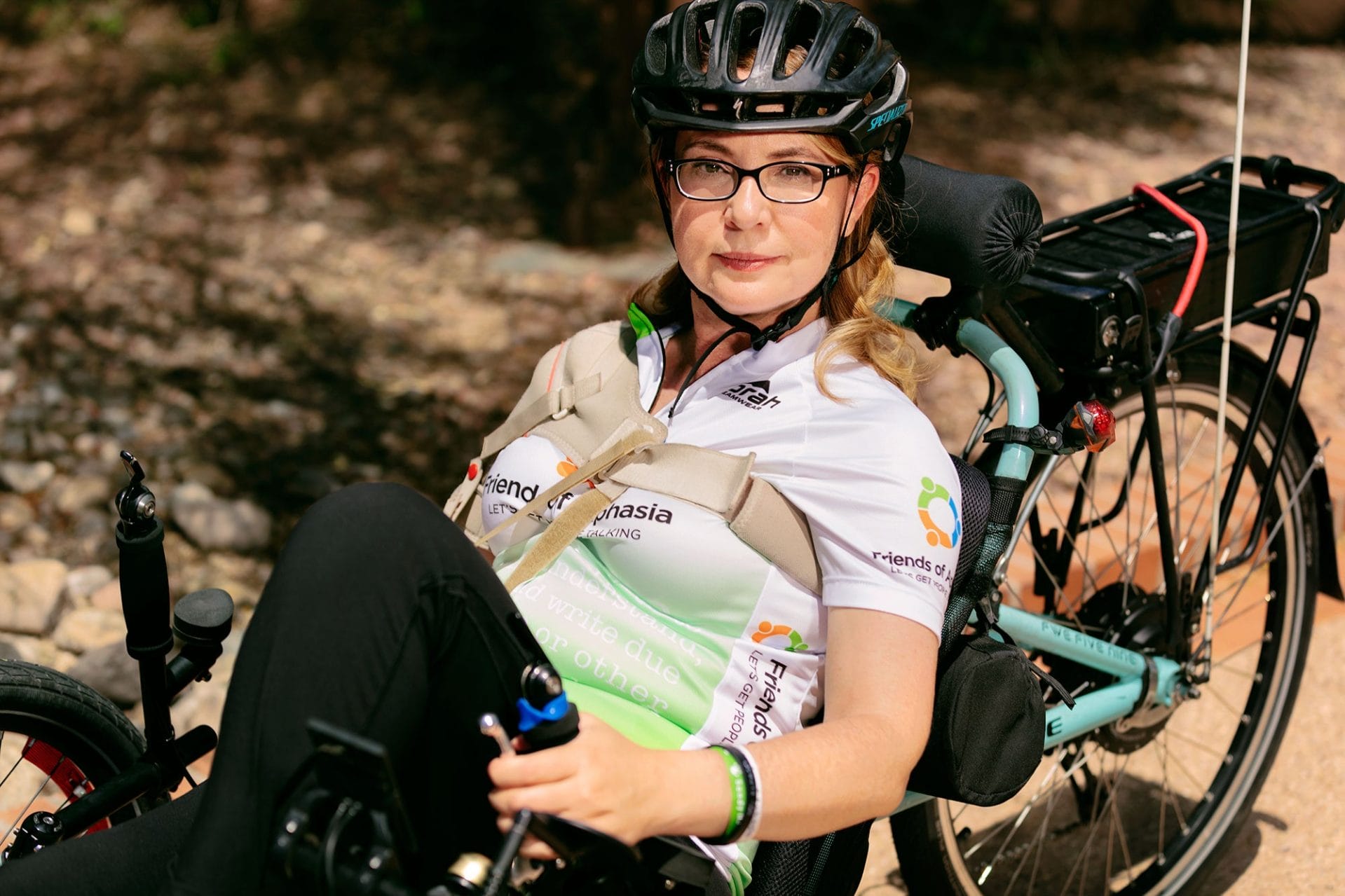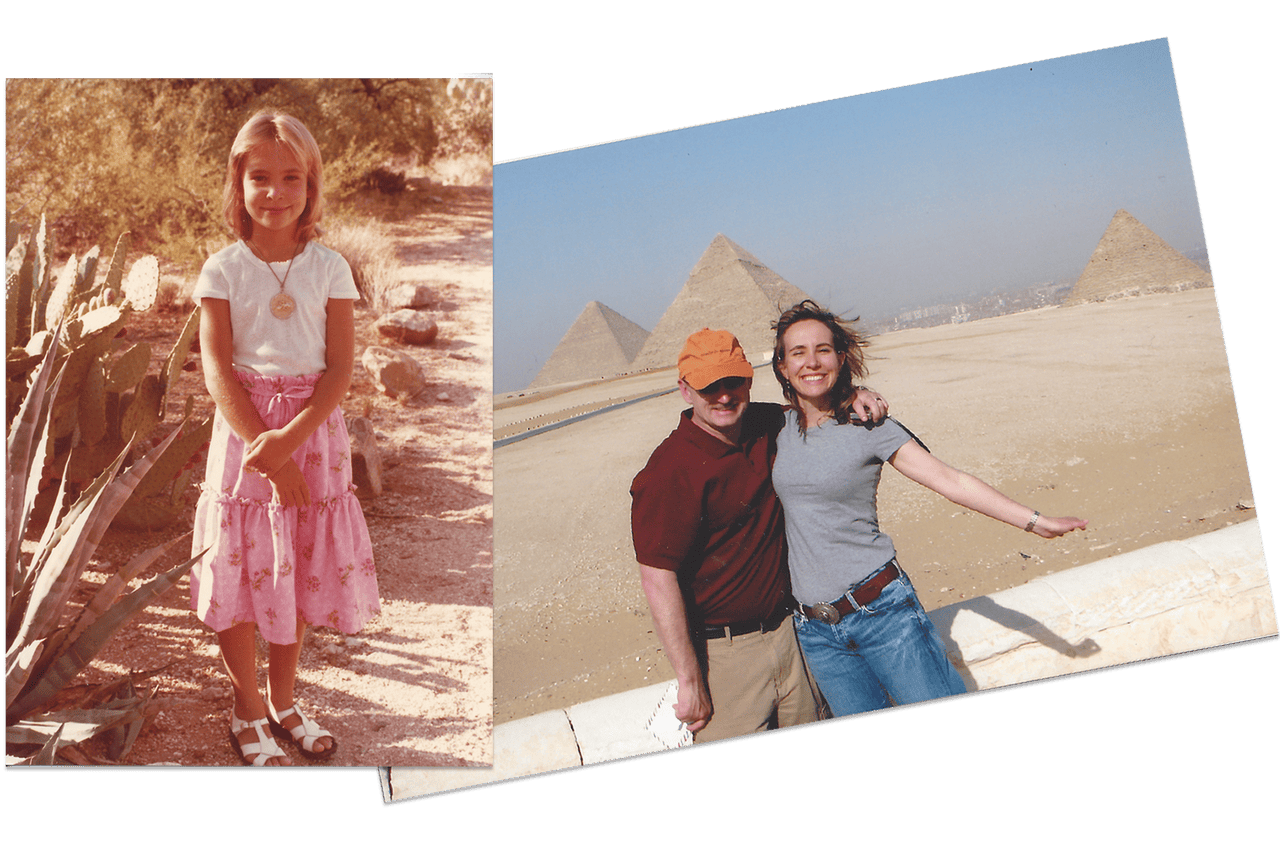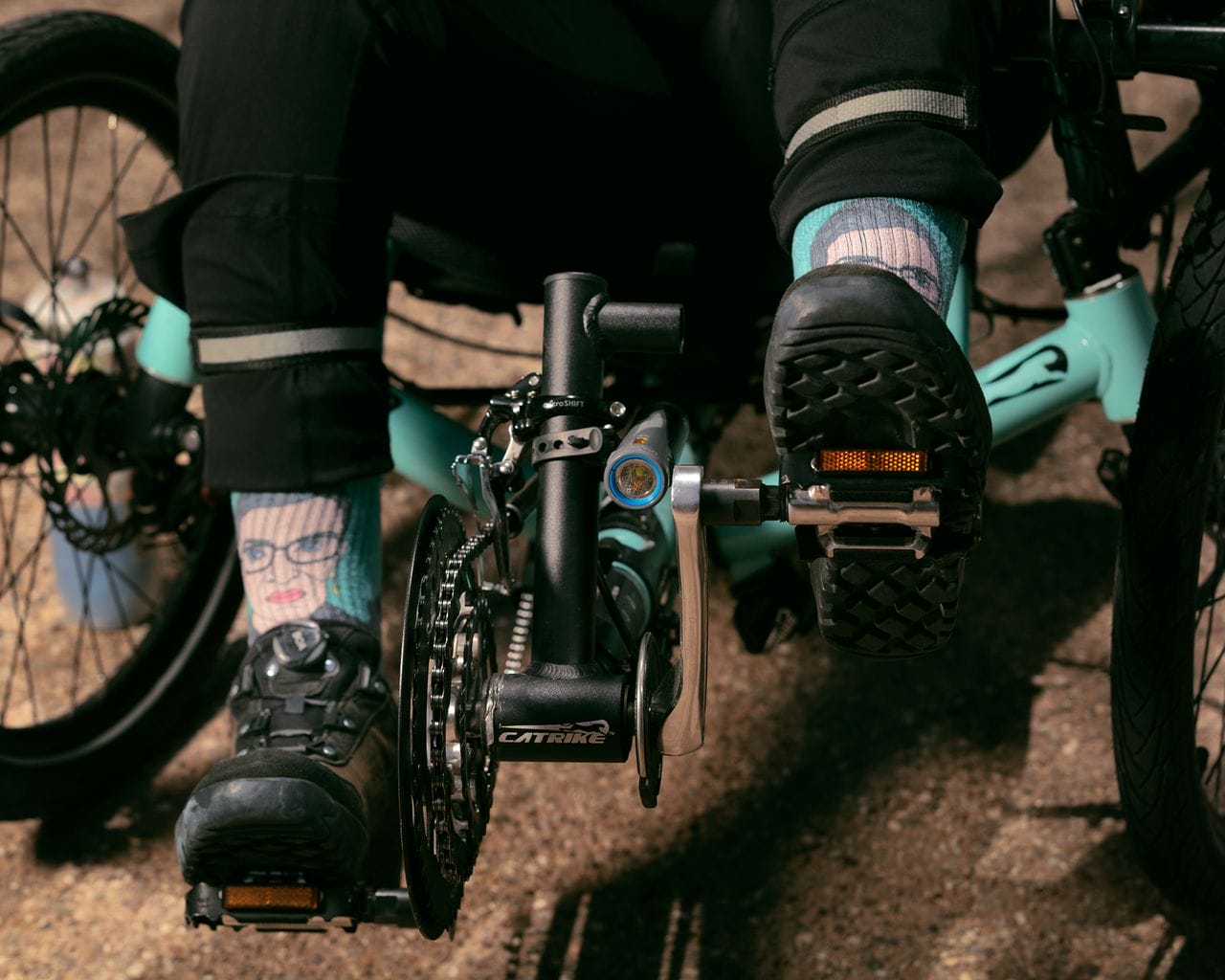
How Gabby Giffords Survived a Shot to the Head, and Outsmarted the NRA
Less than a decade after her brush with death, former congresswoman Gabby Giffords is closer than you think to redefining America’s relationship with guns.
This is a preview of a feature story in Vanity Fair by Dave Cullen.
“I rode the bike.”
Ding.
“I rode the bike.”
Gabby Giffords smiles as her iPad chimes. Sentence formed. Way too easy. The smile is magnetic, if slightly crooked: Her dimples burrow a little deeper on the left side. Her left eyebrow is more expressive, while the right looks permanently arched.
Gabby sits at her cozy breakfast table in an aquamarine sweatsuit and Ruth Bader Ginsburg socks that read “I DISSENT.” It’s hour two of speech therapy, and the iPad’s voice recognition helps journal her day. A summerlike day in Tucson, two weeks before Christmas, it began with the ride around her neighborhood on a customized recumbent trike. Gabby’s left leg provides most of the power and all the direction, teaching the left brain with each rotation. Nine years after the gunshot, she can walk on her own with a brace and even managed the 25-mile El Tour de Tucson bike trek last fall.
Gabby’s aphasia, which makes it difficult to form words, is more stubborn. When her skull was shattered, in 2011, the bullet tore a channel straight through her head, out the back, and into a Safeway supermarket. But she caught a peculiar break. The copper-coated round entered an inch above her left eye, traveling straight back through that hemisphere of her brain. If it had crossed to the right, she would probably be dead.
The brain can be miraculously fungible, and Gabby’s began rewiring itself, but most of the language center is on the left. There is only one Broca’s area, where ideas are encoded into words, and the bullet ravaged the area around hers. Gabby’s logic, reasoning, emoting, and most higher functions are intact. She can formulate complex ideas, but she struggles to articulate them.
Fragments. The bulk of Gabby’s speech now.
Noun. Verb. Grimace for inflection, or a Cheshire grin or satisfied nod.
Reading is difficult too, and she has lost 50 percent of peripheral vision in both eyes.

Left: Gabby smiling for the camera at home in Tucson, 1978. Right: Visiting the pyramids in Egypt with Kelly, 2009. | COURTESY OF GABBY GIFFORDS.
Gabby’s goal at speech therapy this quarter is sentence formation. The first sentence, on bike riding, came so easily, but the next refuses to cooperate. Try, fail, try, fail, try. Gabby erases each mistake from the iPad. Frustration mounts, and she presses the backspace too long, removing the good sentence along with the bad. Argh! She attempts to restate it and those words refuse her too: “I—I went to the bike. I went to—I love the—”
She raises her left hand, the good one, palm forward, smashing it against some invisible barrier. Her jaw clenched, she’s locked in a wrestling match with herself. But the Broca can’t be bullied. Her hand drops, shoulders sag. She turns to her therapist.
Throughout the session, Dr. Fabiane Hirsch, whom everyone calls Fabi, has spoken sparingly. “So think about the action,” she says gently.
Gabby softens, and it pops right out: “I rode the bike.”
“There it is!” the doctor says.
It takes 11 minutes to produce five short sentences. Twenty-five words. They used to come so easily before.
MEDIA REQUESTS
Our experts can speak to the full spectrum of gun violence prevention issues. Have a question? Email us at media@giffords.org.
Contact
How Gabby yearns for the before days, when she could enchant crowds and rouse jaded colleagues on the floor of the House of Representatives, where she was a rising star. In 2008, the New York Times singled her out as one of three young female “dragon slayers” who’d beaten the odds in red districts. She has won every election she’s ever entered and seemed destined for bigger things. “I thought she would be senator, governor, then I thought she would run for president,” says Jen Bluestein, a friend and former staffer who is now managing director of NARAL.
Words used to flow effortlessly. Before.
Before a nine-millimeter round ended her political career—and sparked a new mission to combat gun violence, which may finally bear fruit November 3. As the cofounder of Giffords: Courage to Fight Gun Violence, one of the two most significant gun-safety advocacy groups, Gabby is easily the movement’s most visible face and prominent voice. But how can a person who struggles just to speak serve as a spokesperson? Can Gabby function as more than a mascot?
A bleaker question: Does it even matter? Gun safety—Gabby cringes at the term gun control—feels like a lost cause. For a generation, the National Rifle Association has been a political colossus, crushing politicians that defied its commands. No matter the public outcry or the overwhelming polls, politicians genuflected to the NRA.

PHOTOGRAPH BY CASSIDY ARAIZA.
Gabby considered that scenario in recovery. She sensed opportunity. Liberals bemoan the hopelessness of asymmetrical voting: gun owners vote on guns, gun-safety proponents don’t. But Gabby saw asymmetrical candidates. The NRA mobilizes “Second Amendment warriors.” What did the safety side offer? Background checks? Half measures? Forty years of failure?
Gabby’s mission has been giving people someone to vote for.
…
SUPPORT GIFFORDS
We’re in this together. To build a safer America—one where children and parents in every neighborhood can learn, play, work, and worship without fear of gun violence—we need you standing beside us in this fight.
